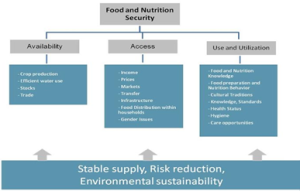World Soil Day (WSD) 2022, is annually observed on December 5.WSD 2022, has a guiding theme, ‘Soils: Where food begins’.

What is soil degradation?
- Soil degradation is the physical, chemical and biological decline in soil quality.
- It can be the loss of organic matter, decline in soil fertility, and structural condition.
- Today, nutrient loss and pollution significantly threaten soils, and thereby undermine nutrition and food security *
- [globally.
- The main drivers contributing to soil degradation are industrial activities, mining, waste treatment, agriculture, fossil fuel extraction and processing and transport emissions.
- The reasons behind soil nutrient loss range from soil erosion, runoff, leaching and the burning of crop residues.
- Soil degradation in some form or another affects around 29% of India’s total land area.
Nearly 3.7 million hectares suffer from nutrient loss in soil (depletion of soil organic matter, or SOM).
Further, excessive use of fertilizers and pesticides, and irrigation with contaminated wastewater are also polluting soils.
What is India’s conservation strategy?
- The Government of India is implementing a five-pronged strategy for soil conservation.
- This includes making soil chemical-free, saving soil biodiversity, enhancing SOM, maintaining soil moisture, mitigating soil degradation and preventing soil erosion.
- Soil Health Card (SHC) scheme (2015)– to provide status of soil’s health to farmers
- Pradhan Mantri Krishi Sinchayee Yojana– to prevent soil erosion, regeneration of natural vegetation, rainwater harvesting and recharging of the groundwater table
- National Mission for Sustainable Agriculture (NMSA)– to promote traditional indigenous practices such as organic farming and natural farming, thereby reducing dependency on chemicals and other agri-inputs, and decreasing the monetary burden on smallholder farmers.
Role of Food and Agriculture Organization of the United Nations (FAO):
- FAO along with National Rainfed Area Authority (NRAA) and the Ministry of Agriculture and Farmers’ Welfare (MoA&FW) to develop forecasting tools using data analytics that will aid vulnerable farmers in making informed decisions on crop choices, particularly in rainfed areas.
- FAO, in association with the Ministry of Rural Development: It supports the Deen Dayal Antyodaya Yojana-National Rural Livelihoods Mission’s (DAY-NRLM) Community Resource Persons.
- It will increase their capacities towards supporting on-farm livelihoods for:
- Adoption of sustainable and resilient practices
- Organic certification
- Agri-nutri-garden
- FAO is partnering with the State government and the Indian Council of Agricultural Research (ICAR) in Andhra Pradesh: to support farmers in sustainable transitions to agro-ecological approaches and organic farming.
